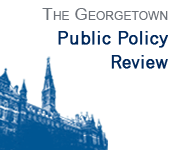by Betsy Keating
In a stereotypical view of the United States, those living in the suburbs are affluent, with larger homes, better schools, and safer neighborhoods, and poverty is a problem only for the inner-city. A recent report published by the Brookings Institution challenges this assumption, demonstrating that suburban poverty rates have been steadily rising over the past decade. Poverty rates are still higher in central cities than in suburbs, but the suburban rates of poverty have grown much more rapidly. Consequently, by 2009, suburbs had 1.6 million more residents living under the poverty line than America’s central cities.
The Brookings Institution report also surveyed nonprofits in suburbs and uncovered the current practical and fiscal difficulties these organizations face. Compared to urban organizations, which tend to concentrate their outreach in relatively small areas, these suburban organizations must cover much larger physical area as they serve the sprawling and decentralized suburbs. Sixty percent of the organizations serve more than one suburban municipality.
In addition, about seventy-three percent of the surveyed organizations have assisted people who had no prior need for “safety net programs,” demonstrating the increasing number of poor people due to the recession. Despite the growing needs of the population they serve, these suburban nonprofits are facing budget cuts; nearly half of the surveyed groups observed a loss in key revenue last year. As a result, over twenty percent of the organizations had reduced the services they offered.
The survey responses suggest that the existing organizations do not have the capacity to reach the ever-increasing number of suburban poor, forcing them to stretch their limited resources across a wide area and large number of people. Thus, while numbers of suburban poor are growing to record levels, the existing nonprofit organizations have such limited resources that they must reduce their actual capacity to reach all affected people.
These realities present a grim policy future. Many social services are funded through federal, state, and local money, but distributed through local nonprofits. Ultimately, the political will of an area can determine whether such organizations will have any funds to operate successfully. Therefore, further government commitments are needed to bolster and expand these nonprofits’ efforts to reach the suburban poor as well as enhance governmental programs (Supplemental Nutrition Assistance Program, Temporary Assistance for Needy Families, Unemployment Insurance, etc.). All levels of government need to include suburbs in their social services policy, ensuring that the growing population of suburban poor will not be excluded from beneficial policies. With heightened national distaste and distrust of big government, however, increases in social services spending may continue to be politically challenging.
Established in 1995, the Georgetown Public Policy Review is the McCourt School of Public Policy’s nonpartisan, graduate student-run publication. Our mission is to provide an outlet for innovative new thinkers and established policymakers to offer perspectives on the politics and policies that shape our nation and our world.
